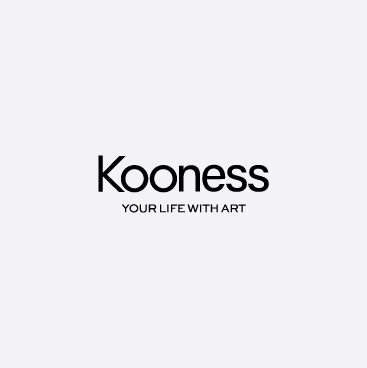Bluepoint
2014
Default
83 x 66.14 in
Year
2014
Medium
Paintings
Reference
3d1ebea6
Acrylic on medium density fiberboard.
My abstract works began as research into the elements of painting and the possibility of expanding the pictorial space of the flat surface. Traditionally, paintings were thought of frames into another space or scene. Confronted with the limitations of expressing three-dimensional sensibilities on a two-dimensional surface, I explored ways to expand the use of painting elements such as colors and perspective through my work. Such interest in the grammar of painting drew me to abstract works and to the problem of contemporary painting where we challenge the material presence and flatness of the painting surface. Through exploring the spatial qualities within flatness, my work reconstructs the pictorial space to extend the possibility of psychological and perceptual fields of the flat surface.
— Jaena Kwon, 2020
1986 Seoul, Korea, Republic of
My abstract works began as research into the elements of painting and the possibility of expanding the pictorial space of the flat surface. Traditionally, paintings were thought of frames into another space or scene. Confronted with the limitations of expressing three-dimensional sensibilities on a two-dimensional surface, I explored ways to expand the use of painting elements such as colors and perspective through my work. Such interest in the grammar of painting drew me to abstract works and to the problem of contemporary painting where we challenge the material presence and flatness of the painting surface. Through exploring the spatial qualities within flatness, my work reconstructs the pictorial space to extend the possibility of psychological and perceptual fields of the flat surface.
Folding and layering are important concepts in my work which I developed using various media from paper models to wood sculptures, canvas paintings, and digital modeling My interested in folds and layered space began during my time at conservation studios studying microscopic cross-sectional sample of old master's paintings. 20X magnifications under stereomicroscopes revealed hidden layers of thin paints that could not be seen with naked eyes. Giant spheres of pigment powders and smooth fields of colors were sublime landscapes within a micro-universe. Paintings are complex objects created with multiple layers of material and repetitive hours of labor, containing a wealth of information beyond simple images. Painting became a means to contain compressed spatial information through overlaying lines and surfaces in a confined space. My idea of folds and layers developed as a way to express compressed brush strokes and drawing marks and expand the pictorial space of the surface into the psychological space of volume.
I focused on specific areas of painting and created their shapes with folded paper. The gestural forms of each paint layer became subjects for my paper models. The thin layers of paint were tested with thicker paper models and then became enlarged layered wood sculptures. Line weights and the brushstrokes were replaced by the fiber and grains of paper, and then into larger monochrome wooden shapes. This process led to a discovery of new types of form and dimensions within flat surfaces. Traditionally, linear perspective and scale have been used to create three-dimensional qualities within the pictorial space of the flat canvas. My larger wood sculptures expand the pictorial space to include the work, the space, and the viewer within the volume of the space. The position and the angle of the viewer's body transform my sculptures into a complex object that expands the spatial relationship of the viewer to the pictorial space of painting.
In a canvas painting, space was in the relationship between the flat surface and the image. In my work, this relationship was brought out to the physical space, focusing on the relationship between the tangible object and its surrounding volume - a transition from sense to perception. By redefining the pictorial space as a volumetric relationship, the viewer has to not only use her vision, but her entire body to experience the work, gradually activating different senses as the path of her vision and body move around about the work and slowly fill the space. As oil paint was developed to best represent tactility and texture of human flesh, I sought a similar quality in my work by controlling the smoothness of the wood and the viscosity of paint on canvas. By creating tactile senses through vision and seeing paintings with the body, I address the viewer’s perceptual event that considers light, direction, and space.
— Jaena Kwon, 2020
Read more
Address
Brooklyn, NY, 229 Central Avenue Storefront
The newest gallery in the burgeoning art scene of Bushwick, Space 776 has been exceedingly successful in creating a space for a wide range of artist whose medium of work stretches from live multimedia performances to traditional oil painting. Working closely with the community of creative individuals in and around Bushwick as well as facilitating relationshi...

